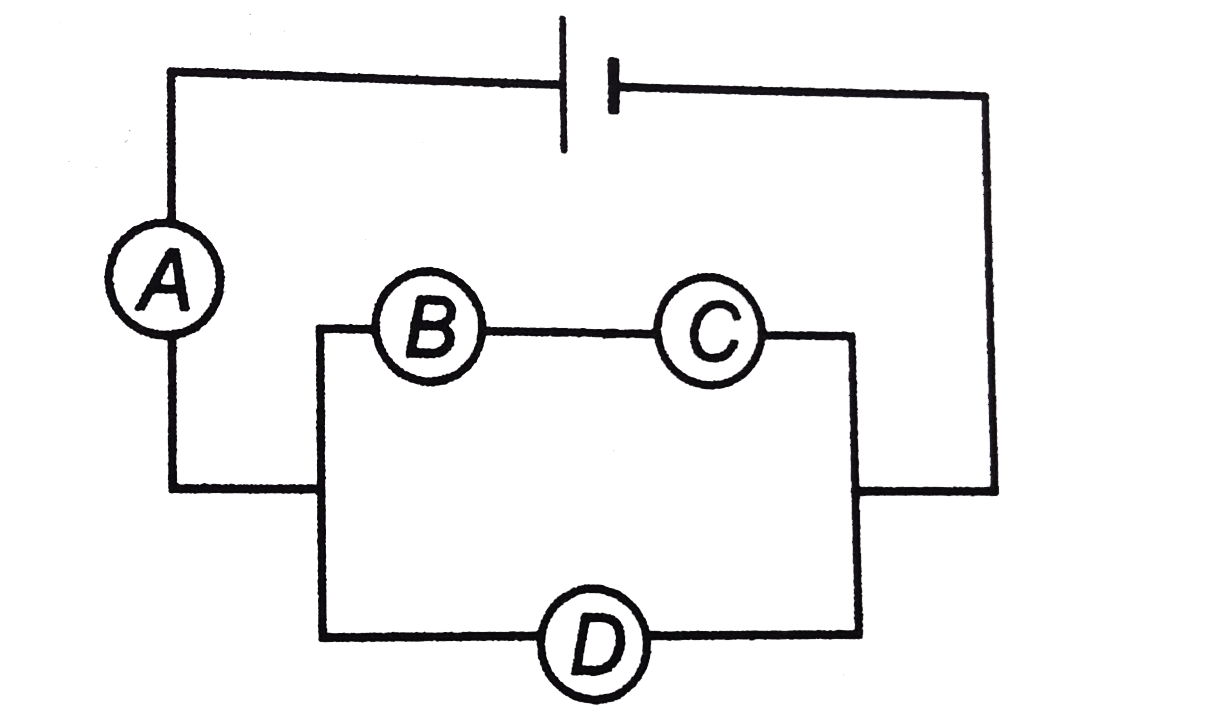Study the circuits given here.

Which of the following are correct statements about the bulbs in the circuits shown above if all the bulbs and cells are identical ?
I. Bulb R is the brightest.
II. Initially, all the bulbs will have the same brightness.
III. All the bulbs will light up for the same period of time.
IV. Bulb P will light up for a longer period of time than bulb Q and bulb R.
A
I and III
B
II and III
C
I and IV
D
II and IV
Video Solution
Text Solution
The correct Answer is:D
Maximum number of batteries are connected to bulb P, so it will glow for the longest period. As identical cells are connected in parallel to bulbs, so all the bulbs will glow with equal brightness.
|
Topper's Solved these Questions
- ELECTRICITY AND CIRCUITS BOOK - SCIENCE OLYMPIAD FOUNDATION CHAPTER - ELECTRICITY AND CIRCUITS EXERCISE - ACHIEVERS SECTION (HOTS)
5 Videos
- CLASS 6 SAMPLE PAPER FINAL 4BOOK - SCIENCE OLYMPIAD FOUNDATION CHAPTER - CLASS 6 SAMPLE PAPER FINAL 4EXERCISE - Section C - Science
2 Videos
- FUN WITH MAGNETS BOOK - SCIENCE OLYMPIAD FOUNDATION CHAPTER - FUN WITH MAGNETS EXERCISE - ACHIEVERS SECTION (HOTS)
5 Videos
Similar Questions
Knowledge Check
In which of the following arrangements of electrical circuits will the bulb (s) not light up , assuming that all the bulbs and dry cells are identical ?
A B
B C
C D
D
In the circuit diagram, all the bulbs are identical. Which bulb will be the brightest ?
 AABBCCDD
AABBCCDDIn which of these circuits will the bulb glow?
A B
B C
C D
D
In the two circuits shown, all the light bulbs and batteries are identical. If A,B and C repectively denotes the brightness of light bulbs A,B & C then

View SolutionAll the bulbs below are identical. Which bulb(s) shine(s) most brightly?

View SolutionAll bulbs in the circuit shown in figure are identical. Which bulb glows most brightly?

View SolutionChoose the correct statement about the given circuit: Three identical bulbs are connected as shown in the figure.

View SolutionChoose the correct statement about the given circuit: Three identical bulbs are connected as shown in the figure.

View Solution

